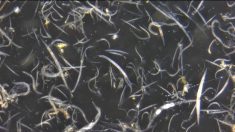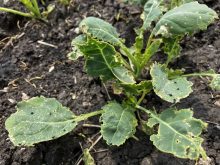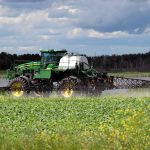Borage has been prized for its curative powers since ancient times.
In Roman times, the naturalist Pliny regarded it as an antidepressant, and a famous herbalist from the 16th century wrote that a syrup made from borage “comforteth the heart, purgeth melancholy, and quieteth the phrenticke or lunaticke person.”
For Prairie farmers who may fit that description after last year’s disappointing canola crop, the plant with the pretty purplish-blue blossoms that honeybees adore may offer a lucrative alternative to canola in rotations following cereals.
Read Also

CUSMA access key among other trade noise: Seeds Canada panel
Seeds Canada conference panelists say Canada needs to stay focused and wait as U.S. trade and tariff chaos develops, and a Canada-U.S.-Mexico Agreement review looms
Shane Falk, crop production manager of Saskatoon-based Bioriginal Food and Science, said that his company is looking to expand the company’s contracted acres for the oilseed to 10,000, up from 5,000 acres last year.
“Instead of growing flax or canola, it’s another alternative with a little less costs in terms of fertilizer,” said Falk.
“It’s not that different. You just plant it, spray it, and combine it.”
The company, which has been around since the early 1990s, extracts the gamma linoleic acid (GLA) containing oil at its own crushing facilities and markets it in capsule and cream form as an arthritis remedy.
Stockpiles of the oil have dipped lately due to demand for the product, and that has motivated Bioriginal to seek out more growers.
Gross returns from the crop range from $300 to $600 per acre, with recent plot trials showing that the latest cultivars are capable of reaching further into the top end due to better seed retention.
“With our new varieties we’ve been seeing average yields of 150 kg per acre, with upwards of 200 kg being grown,” he added.
“Also with the price of fertilizer at its current values, you’re looking at about $25 per acre savings over canola as well with the decreased costs.”
Seed costs are $35 per acre shipped to the contracted grower, with the price deducted from payment when the crop is picked up by the company in fall. A minimum of 80 acres is required under the terms, with no maximum.
Falk, who visits each contracted field three times throughout the growing season, said that the final payment is based on the gamma linoleic acid content in the seed. This year, the company was paying $4 per kg for seed containing less than 20.39 per cent GLA, and $4.25 for 22 per cent or more.
“The higher the GLA, the more it is worth to us. The majority of borage this year has been in the middle range but we have had a few growers with 22-plus GLA,” he said.
“We like to offer guys a $50-or-more premium over canola to get guys to grow it.”
Although some contracted growers produce the crop under organic conditions even without being offered a premium, Falk recommends a pre-seed burn-down with glyphosate, followed by a second pass prior to emergence.
Seed should be planted at half-inch to a full inch depth in moist but not wet soil at a rate of seven kg per acre. Fertilizer rates should not exceed 50 lbs./acre for nitrogen, and no more than 40 lbs./acre of phosphate. Sulphur and potash rates are similar to those for canola.
In crop, Poast can be used to whack grassy weeds, and Assert for broadleaf troublemakers.
Honeybees are critical for best yield results, and at least one hive per acre distributed around the field is needed to ensure pollination success.
Because the crop flowers for extended periods during the growing season, beekeepers are generally keen to help out in exchange for hives overflowing with high-quality honey, he said.
Borage should be swathed when the seeds turn black and 85-90 per cent of the plants are ashen grey in colour. To avoid seed damage, the crop should be harvested at 10 per cent moisture and then dried down via aeration.
As with any crop, next-year volunteers may be present, but they typically can’t compete when the rotation returns to cereal production, he said.


















